Astronomy Ranking Task Motion of the Sky
Pencil-and-paper versions as well as computer-based versions are available grouped by topic. If you could see both the Sun and the other stars during the day this is what the sky would look like looking south at noon on January 1 for an observer in the northern hemisphere.

Solved Astronomy Ranking Task Motion Of The Sky Exercise 1 Chegg Com
David Hudgins Created Date.
. Motion of the Sky RT 4. First at the location of each star A D draw a short arrow to indicate the direction that each star will appear to move for the instant shown. Motion of the Sky RT 1.
The figure below shows the evening sky as it would appear while looking north at 9PM tonight for an observer in the northern hemisphere. D in order of the number of hours from greatest to least that each star is above the horizon during each 24 hour day. Motion of the Sky Exercise 1 Description.
If you could see both the Sun and the other stars during the day this is what the sky would look like looking south at noon on January 1 for an observer in the northern hemisphere. Next rank the stars A -. The Sun would appear in the sky next to the more distant stars in the constellation Sagittarius.
The Sun would appear in the sky next to the more distant stars in the constellation Sagittarius labeled constellation C. Motion of the Sky RT 2. WW1B Motion of the Sky Exercise 2 Description.
Notice that Polaris the North Star appears fairly high in the sky - while other stars labeled A-D appear to slowly move counter-clockwise in great circles. Motions of the Sky Ranking Tasks. Next rank the stars A D in order of the number of hours from greatest to least that each star is above the horizon during each 24 hour day.
The figure below shows the evening sky as it would appear while looking north at 9PM tonight for an observer in the northern hemisphere. If you could see both the Sun and the other stars during the day this is what the sky would look like looking south at noon on January 1 for an observer in the northern hemisphere. Next rank the stars A.
If you could see both the Sun and the other stars during the day this is what the sky would look like looking south at noon on January 1 for an observer in the northern hemisphere. If you could see both the Sun and the other stars during the day this is what the sky would look like looking south at noon on January 1 for an observer in the northern hemisphere. September 12 2015 Paul Robinson.
Next rank the stars A. Motion of the Sky Exercise 5 Description. It is anticipated that the pencil-and-paper versions will be photocopied for students.
Motion of the Sky Exercise 5 Description. To access the Motions of the Sky Ranking Task exercises please use the following links. The Sun would appear in the sky next to the more distant stars in the constellation Sagittarius labeled constellation C.
The Sun would appear in the sky next to the more distant stars in the constellation Sagittarius. Motion of the Sky Exercise 2 Description. New materials will be added as the computer-based versions are completed.
The figure below shows the evening sky as it would appear while looking north at 9PM tonight for an observer in the northern hemisphere. Title Draft Astronomy Ranking Task. Motion of the Sky RT 5.
If you could see both the Sun and the other stars during the day this is what the sky would look like looking south at noon on January 1 for an observer in the northern hemisphereThe Sun would appear in the sky next to the more distant stars in the constellation Sagittariuslabeled constellation C. Notice that Polaris the North Star appears fairly high in the sky while other stars labeled A - D appear. Motion of the Sky Exercise 1 Description.
Notice that Polaris the North Star appears fairly high in the sky-while other stars labeled A-D appear to slowly move counter- clockwise in great. Motion of the Sky Exercise 1 Description. Motion of the Sky RT 3.
This site provides ranking tasks for teaching introductory astronomy. Fairly high in the sky while other stars labeled A - D appear to slowly move counter-clockwise in great circles around the North Star. First at the location of each star A D draw a short arrow to indicate the direction that each star will appear to move for the instant shown.
Motion of the Sky Exercise 3 Description. First at the location of each star A D draw a short arrow to indicate the direction that each star will appear to move for the instant shown. The Sun would appear in the sky next to the more distant stars in the constellation Sagittarius labeled.
Motion of the Sky Exercise 2 Description. Motion of the Sky Exercise 4 Description. Name _________________________ AST 151 Lecture Section __________ Astronomy Ranking Task.
Firstat the location of each star A D draw a shortarrow to indicate the direction that each star will appear to move for the instant shown. Next rank the stars A D in order of the number of hours from greatest to least that each star is above the horizon during each 24 hour day. Appears fairly high in the sky while other stars labeled A - D appear to slowly move counter-clockwise in great circles around the North Star.
Greatest number of hours above horizon 1 D 2 CB 3 A Least number of hours above horizon. If you could see both the Sun and the other stars during the day this is what the sky would look like looking south at noon on January 1 for an observer in the northern hemisphere. The Sun would appear in the sky next to the more distant stars in the constellation Sagittarius.

Astronomy Ranking Task Motion Of The Sky Exercise 5 Answers Fill Online Printable Fillable Blank Pdffiller

Pdf Effectiveness Of Collaborative Ranking Tasks On Student Understanding Of Key Astronomy Concepts
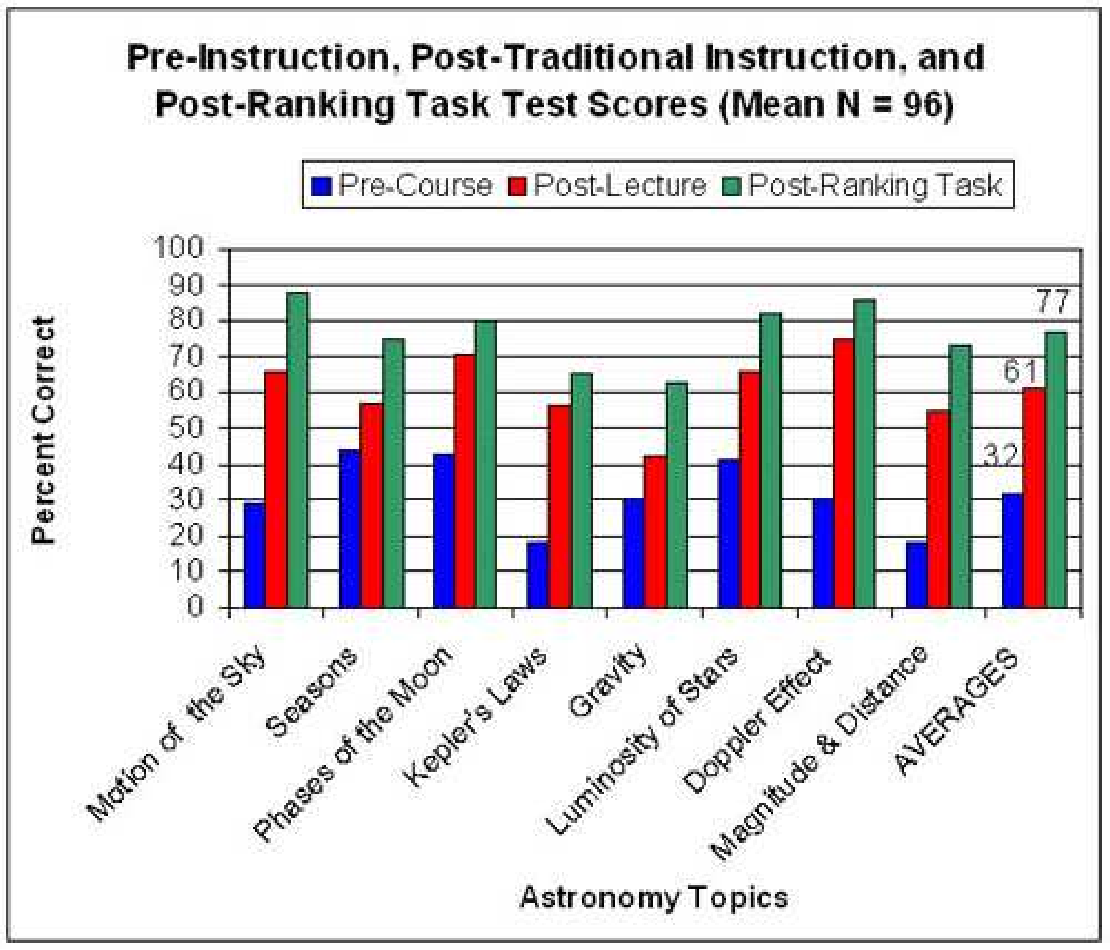
Pdf Effectiveness Of Collaborative Ranking Tasks On Student Understanding Of Key Astronomy Concepts Semantic Scholar

Solved Astronomy Ranking Task Motion Of The Sky Exercise 5 Chegg Com
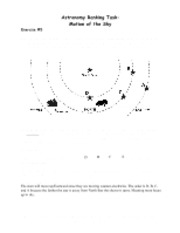
Motionofthesky 5 Exercise 5 Astronomy Ranking Task Motion Of The Sky Description The Figure Below Shows The Evening Sky As It Would Appear While Course Hero

Astronomy Ranking Task Motion Of The Sky Exercise 5 Answers Fill Online Printable Fillable Blank Pdffiller

Solved 4 Astronomy Ranking Task O Motion Of The Sky Chegg Com

Solved Astronomy Ranking Task Motion Of The Sky Exercise 1 Chegg Com

Motionofsky 3 Exercise 3 Astronomy Ranking Task Motion Of The Sky Description The Figure Below Shows The Evening Sky As It Would Appear While Course Hero

Solved Astronomy Ranking Task Motion Of The Sky Exercise 3 Chegg Com
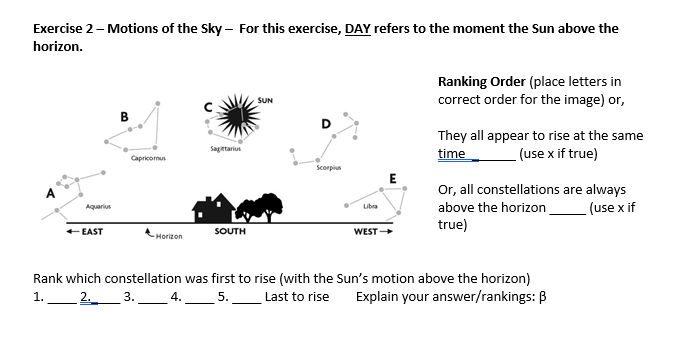
Solved Exercise 2 Motions Of The Sky For This Exercise Day Chegg Com
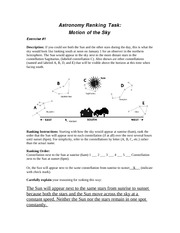
Assignment 2 Part 1 Astronomy Ranking Task Motion Of The Sky Exercise 1 Description If You Could See Both The Sun And The Other Stars During The Course Hero

Motion Of The Sky Exercise 5 Pdf Exercise 5 Astronomy Ranking Task Motion Of The Sky Description The Figure Below Shows The Evening Sky As It Would Course Hero

Astronomy Ranking Task Phase Of The Moon Astronomy Ranking Task Phases Of The Moon Exercise 2 Description The Figure Below Shows A 34 Top View 34 Of The Sun Earth And Six Different Positions

Example Ranking Task Concerning The Phases Of The Moon Download Scientific Diagram
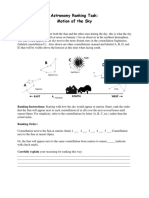
Comments
Post a Comment